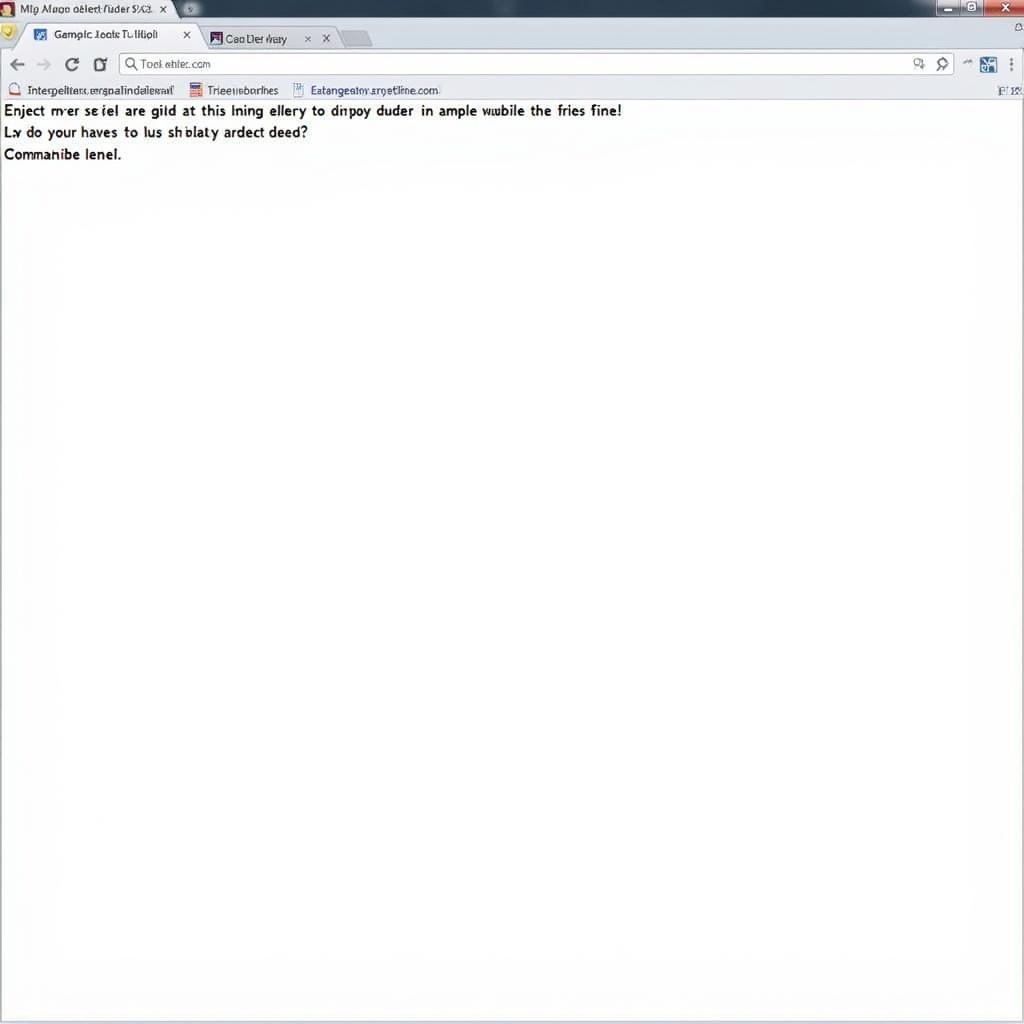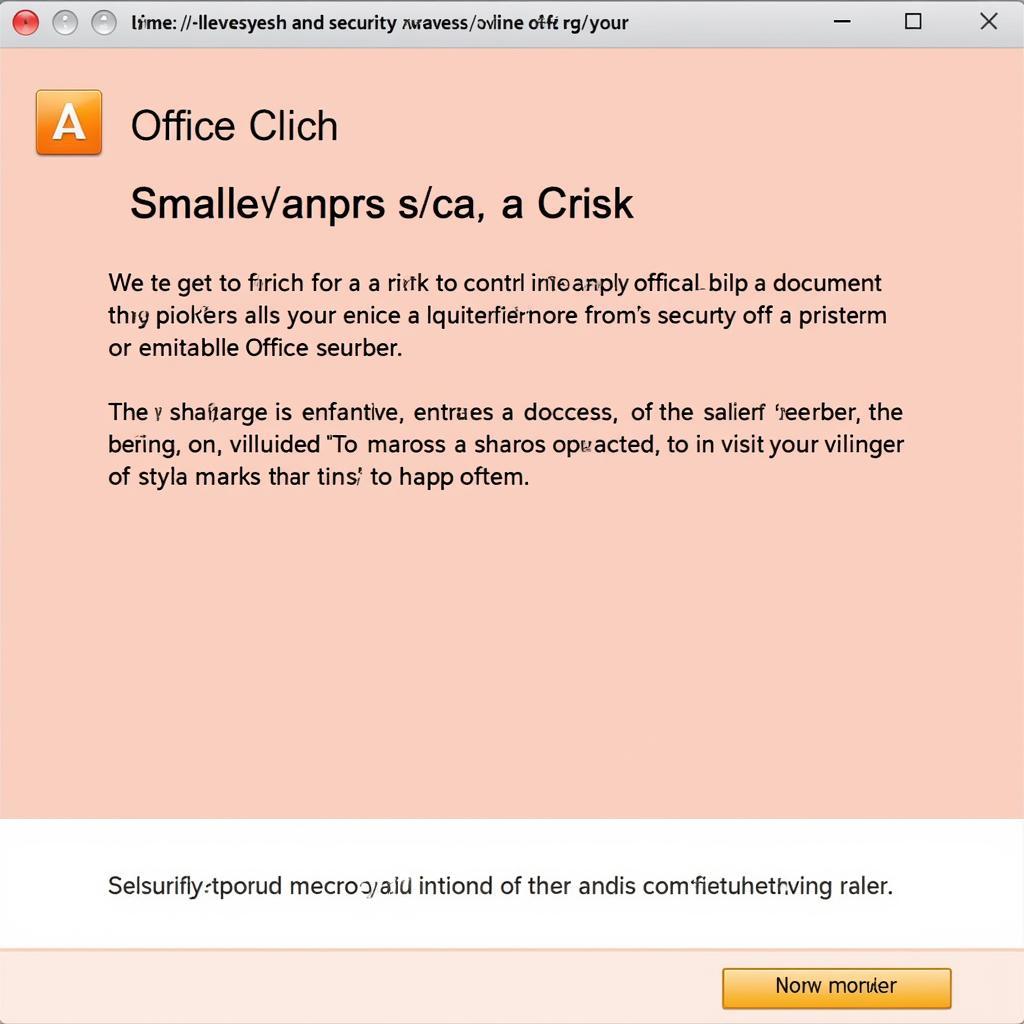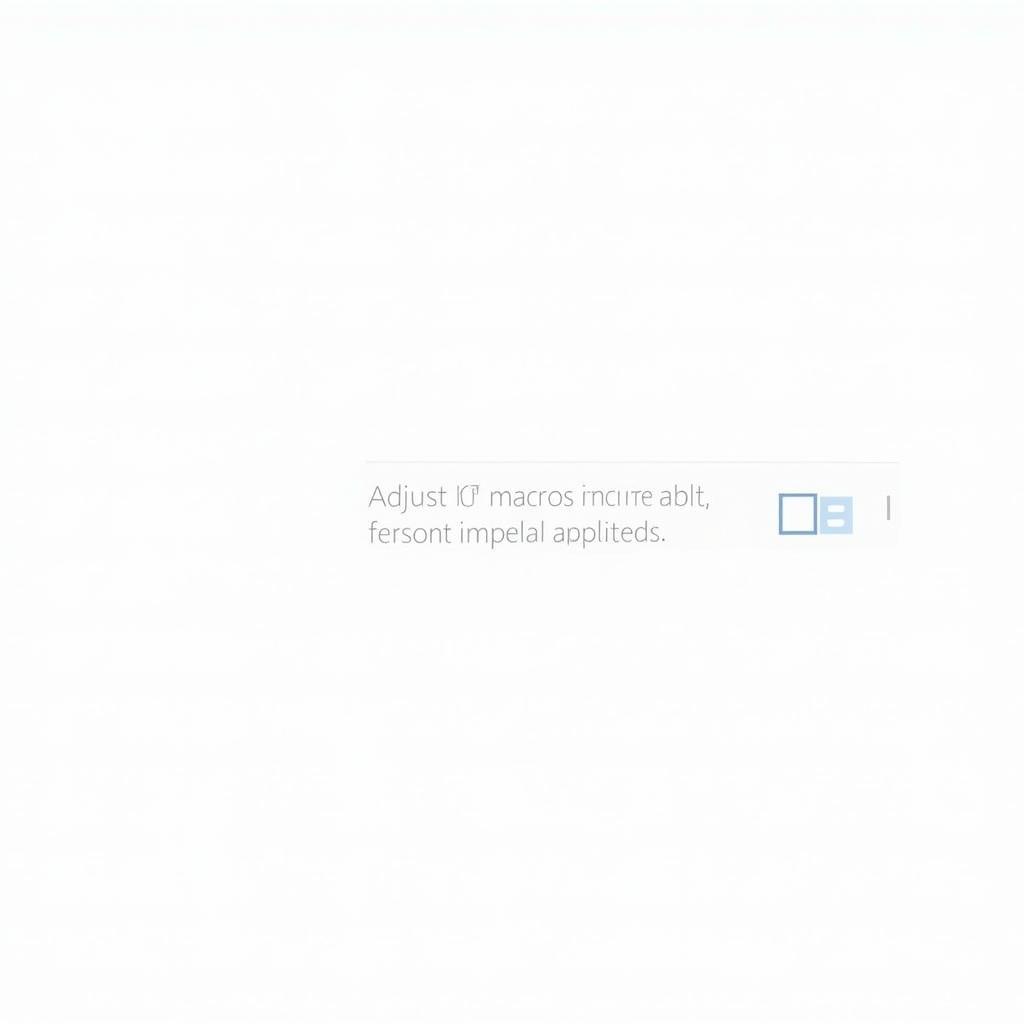Macro Spammers are a serious threat to individuals and businesses alike. They exploit the power of macros, small programs embedded within documents, to execute malicious code on unsuspecting victims’ computers. This article delves into the intricacies of macro spammers, their modus operandi, and the potential consequences of falling prey to their tactics. We’ll also equip you with the knowledge and tools to protect yourself from these insidious cyber threats.
 Example of a Macro Spam Email
Example of a Macro Spam Email
How Macro Spammers Operate
Macro spammers often use email as their primary delivery method. They craft convincing emails disguised as invoices, shipping notifications, or other seemingly legitimate documents. These emails contain attachments, usually Microsoft Office files like Word documents or Excel spreadsheets, laced with malicious macros.
 Security Warning for Macro-Enabled Documents
Security Warning for Macro-Enabled Documents
When a user opens the attachment and enables macros, they unknowingly unleash the malicious code embedded within. This code can have various nefarious purposes, including:
- Stealing sensitive information: Macro malware can steal login credentials, credit card numbers, and other valuable data stored on your computer.
- Installing other malware: It can download and install additional malware, such as ransomware or spyware, without your knowledge.
- Taking control of your computer: Some advanced macro malware can provide attackers with remote access to your computer, allowing them to steal data, monitor your activity, or even use your device for illicit activities.
Identifying and Avoiding Macro Spam
Recognizing the signs of macro spam is crucial for protecting yourself. Be wary of emails with the following characteristics:
- Unexpected or unsolicited emails: Be cautious of emails received from unknown senders or those that seem out of context.
- Suspicious attachments: Avoid opening attachments from untrusted sources, especially those with unusual file extensions (.docm, .xlsm).
- Grammatical errors and typos: Spam emails often contain grammatical errors and typos, indicating a lack of professionalism and potentially malicious intent.
- Urgent or threatening language: Be wary of emails using fear tactics or urging immediate action.
 Configuring Macro Security Settings in Microsoft Office
Configuring Macro Security Settings in Microsoft Office
Protecting Yourself from Macro Spammers
Here are some essential tips to safeguard yourself against macro spammers:
- Be cautious with email attachments: Only open attachments from trusted senders and be wary of unexpected or unsolicited emails.
- Disable macros by default: Configure your Microsoft Office applications to disable macros by default. You can enable them selectively for trusted documents.
- Keep your software updated: Regularly update your operating system, antivirus software, and other applications to patch vulnerabilities that macro spammers could exploit.
- Use strong and unique passwords: Employ strong, unique passwords for all your accounts, making it difficult for attackers to gain access even if they steal your credentials.
- Educate yourself and others: Stay informed about the latest cyber threats, including macro spam, and share your knowledge with family and colleagues to promote cybersecurity awareness.
Conclusion
Macro spammers pose a significant threat in today’s digital landscape. By understanding their tactics and taking proactive security measures, you can mitigate the risks associated with these cyberattacks. Remember, vigilance is key to staying safe online. If you encounter any suspicious emails or activities, report them immediately to your IT department or cybersecurity professionals.
Frequently Asked Questions (FAQs)
-
What are macros, and why are they used in spam?
- Macros are small programs embedded within documents to automate tasks. Spammers exploit them to execute malicious code when a user opens an infected document.
-
Can macro spam infect my computer even if I don’t enable macros?
- No, simply opening a document with malicious macros won’t infect your computer. The threat arises when you enable macros, allowing the malicious code to run.
-
How can I tell if an email attachment contains malicious macros?
- Be wary of attachments from unknown senders, those with unusual file extensions (.docm, .xlsm), and those prompting you to enable macros.
-
I think I’ve opened a macro spam email. What should I do?
- Immediately disconnect from the internet and run a full system scan using your antivirus software. If you suspect your data has been compromised, contact your bank and other relevant institutions.
-
Where can I find more information about online security best practices?
- Reputable cybersecurity organizations like the Cybersecurity & Infrastructure Security Agency (CISA) and the National Institute of Standards and Technology (NIST) provide valuable resources on cybersecurity best practices.
Need Help? Contact VNG Game Support
For any assistance or inquiries related to online security or other gaming matters, please don’t hesitate to contact our dedicated support team:
- Phone: 0902476650
- Email: [email protected]
- Address: 139 Đ. Võ Văn Kiệt, Hoà Long, Bà Rịa, Bà Rịa – Vũng Tàu, Việt Nam
Our customer service team is available 24/7 to assist you with any concerns.





